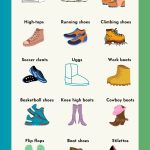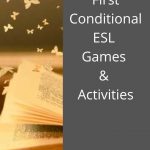Instruction checking questions (ICQ’s) are necessary for a smoothly running language classroom. Keep on reading for all the details you need to know, including a definition, meaning and examples.

ICQ meaning
What is an ICQ?
Teachers use ICQ’s to make sure that language learners understand what they need to do during an activity. For example, to clarify how many people are in a group, what the goal of the task is, or how many minutes they have to complete something.
In a second language class, it’s very common for students to misunderstand a teacher giving instructions, particularly at lower levels. They may be too embarrassed to admit that they didn’t understand in front of their classmates, or they might not have the language ability to formulate a question related to instructions.
Whatever the case, instruction checking questions are vital for ensuring a well-run language class.
Oh, and one thing before we get into all the details about instruction checking questions! Whatever you do, please banish the question, “Do you understand?” It’s useless because all students will say yes, all the time, even if they don’t. There is a better way! Keep on reading to find out more.
ICQ Definition
ICQ = instruction checking question. They are used in language classes to ensure that students have understood instructions that a teacher has given. They are simple questions that should require only an answer that is one or two words. ICQ’s are ideal for eliciting feedback from students.

What is ICQ?
ICQ vs CCQ
Although ICQs (instruction checking question) and CCQs (concept checking questions) are similar, they test different things. ICQs are designed to test understanding of instruction while CCQs test whether or not students have understood something related to language. For example, a CCQ might be related to the difference between curly and straight hair, or the rules for the simple past.
More details here: CCQs.
Instruction Checking Questions Examples
There are countless examples of instruction checking questions and they’ll largely depend on the activity or game. However, here are some examples:
- How many people are in a group?
- How many minutes do you have to finish?
- What page is it on?
- When is the homework due?
- Should you talk in a big group or 1-1?
- What do you have to write?
- How many sentences do you need to write?
Teaching Tips for Instruction Checking Questions
Here are a few of my top tips for using ICQs in your classes.
#1: Think Simple with an ICQ!
The best ICQs are very simple. Think yes/no questions (Should you stand up?). Or, a question that requires only a one-word answer (How many people in a group? 3).
#2: Write Instruction Checking Questions Down
When making a lesson plan, jot down a few ICQs for each activity or game. Experienced teachers can often think of them on the spot but this isn’t as easy to do when just starting out. Write them down in the lesson plan.
#3: Seems Too Obvious?
Not to worry. Obvious is good. Most students will have already understood the instructions. ICQs are for the bottom 20% of the class that may be struggling.
#4: Some Students Zone Out
Feeling frustrated that students seem to be zoning out during instructions. Won’t worry. This is totally normal during a language class. One way to help these daydreamers in your class out is with ICQs. They are a nice way to reduce cognitive load.
#5: More Complicated Instructions = More ICQs
Think about how complicated your instructions are. Something like, “Start now” is so simple that you don’t need to check it. Or, “You have three minutes” falls into this too simple category.
However, instructions like this “Turn to page 7. Do questions 2/5/9 with a partner. Circle the verbs and underline the nouns. You have three minutes and then we will check answers” may challenge many students. And for something like task-based learning, you’ll have to use even more of them.

How to use instruction checking questions
Instruction Checking Questions FAQs
There are a number of common questions that people have about using these questions in language classes. Here are the answers to some of the most common ones.
How do you ask an ICQ?
The time to ask an ICQ is after giving instructions and before starting an activity or game. They should be simple, planned in advance and are designed to make sure students understand what they need to do.
What is ICQ and CCQ in ESL?
In ESL, an ICQ is an instruction checking question while a CCQ is a concept checking question. ICQ’s are used to check understanding of instructions while CCQ’s are used to check understanding of language concepts.
What does ICQ mean in teaching?
In teaching, an ICQ means instruction checking question.
Is, “Do you understand?” an ICQ?
Technically, do you understand could be an ICQ but it’s not that helpful because all students will answer, “Yes!” even if they don’t understand.
What can be done if learners do not understand the instructions?
If learners do not understand the instructions, the teacher or trainer can rephrase or provide further explanations, demonstrate the task, or encourage learners to ask specific questions for clarification.
How many ICQs should be asked?
The number of ICQs can vary depending on the complexity of the task. It is advisable to ask multiple questions to cover different aspects of the instructions and ensure comprehensive understanding.
Can instruction checking questions be used in different educational settings?
Yes, instruction checking questions can be used in various educational settings, including classrooms, workshops, training sessions, and online learning environments.
Are instruction checking questions only used by teachers?
No, learners can also use instruction checking questions to seek clarification or confirm their understanding of instructions from the teacher or their peers.
Should ICQs be used for every task or activity?
ICQs are particularly useful for complex or critical tasks, but they may not be necessary for every simple or straightforward activity. Teachers can use their judgment to determine when to use instruction checking questions effectively.
More Tips for Teaching English
If you’re looking to level up your English classes, then you’ll definitely want to check out this book on Amazon: Tips for Teaching ESL/EFL to Teenagers, University Students, and Adults. You can easily find the book on Amazon in a variety of formats.
Head on over to Amazon today and get ready for better English classes tomorrow. Click here:
How Can Teachers Make Sure Students Understand Instructions?
Ensuring that students understand instructions is an important aspect of effective teaching. Here are some strategies teachers can use to help students comprehend instructions:
- Clear and Concise Language: Use simple and straightforward language when delivering instructions. Avoid using jargon, technical terms, or complex sentences that might confuse students.
- Repeat and Reinforce: Repeat important instructions multiple times, especially for complex or multi-step tasks. Reinforce the key points to emphasize their importance.
- Chunk Information: Break instructions into smaller, manageable chunks. Present one step at a time and allow students to complete each step before moving on to the next. This approach helps prevent overwhelming students with too much information at once.
- Visual Aids: Supplement verbal instructions with visual aids, such as charts, diagrams, or pictures, to provide additional clarity. Visual representations can support students’ understanding and help them visualize the tasks.
- Check for Understanding: After providing instructions, ask students to repeat or summarize the instructions in their own words. This technique allows you to assess their understanding and address any misconceptions or gaps.
- Use Different Modalities: Vary the instructional methods by incorporating auditory, visual, and kinesthetic elements. Some students may better comprehend information through listening, while others may benefit from seeing or doing. Providing a combination of modalities caters to different learning styles.
- Provide Examples: Offer examples that illustrate how to complete a task or solve a problem. These examples can serve as models for students, helping them understand the expectations and process more effectively.
- Use Scaffolding: Gradually release responsibility to the students by providing scaffolding or support as needed. Start with more explicit instructions and guidance, and then gradually reduce the level of support as students gain understanding and confidence.
- Encourage Questions: Create an open and supportive classroom environment where students feel comfortable asking questions. Encourage them to seek clarification if they are unsure about any aspect of the instructions.
- Peer Collaboration: Foster opportunities for students to work together and discuss instructions. Collaborative activities allow students to engage in dialogue, share their understanding, and clarify instructions with their peers.
- Regular Feedback: Provide timely and constructive feedback on students’ work. Feedback helps students understand where they may have misunderstood or misinterpreted the instructions, allowing them to make necessary corrections.
Using Instruction Checking Questions: Join the Conversation
Do you have any thoughts about using instruction-checking questions in your language classes? Leave a comment below and let us know what you think. We’d love to hear from you.
Last update on 2022-07-17 / Affiliate links / Images from Amazon Product Advertising API





